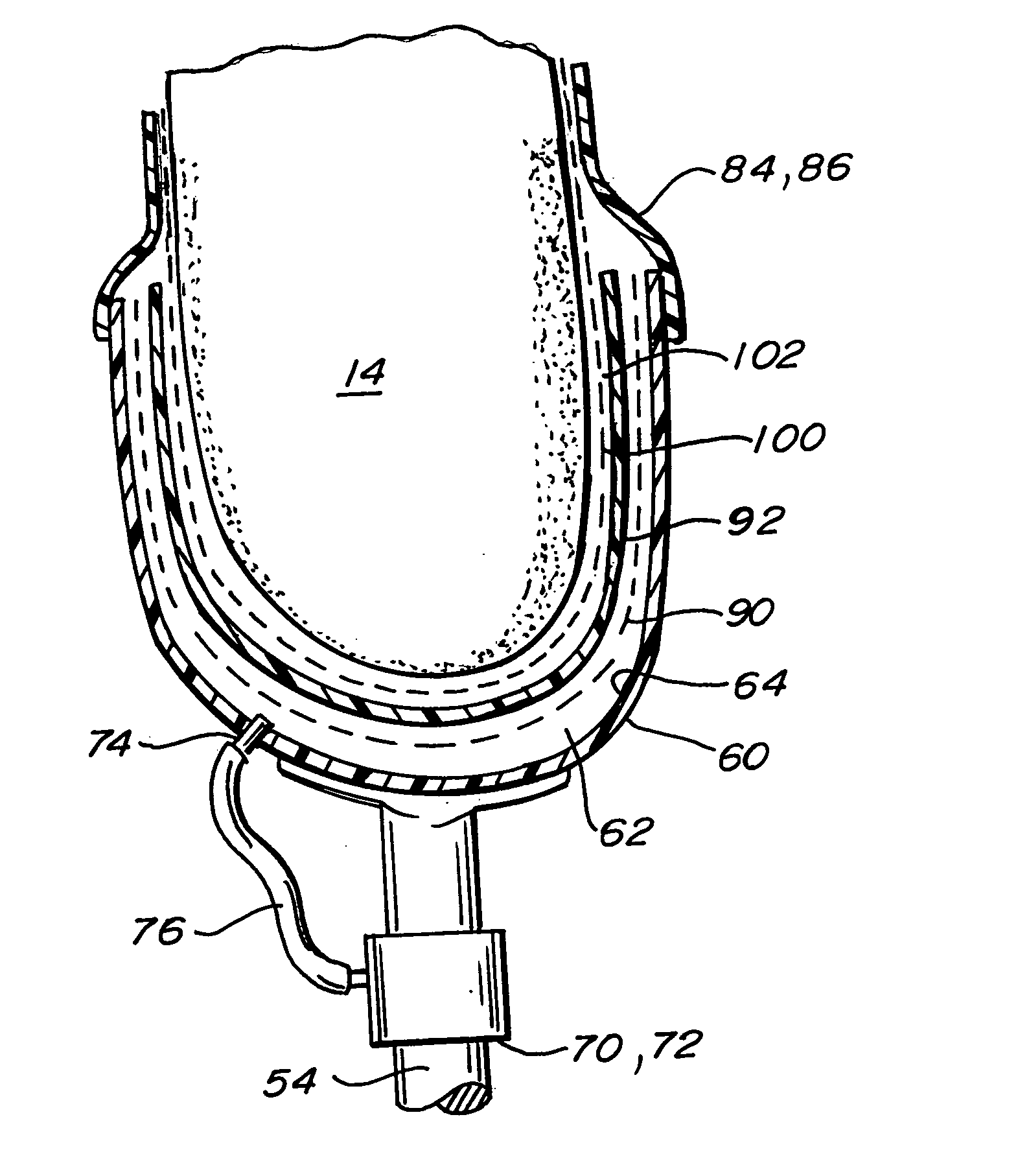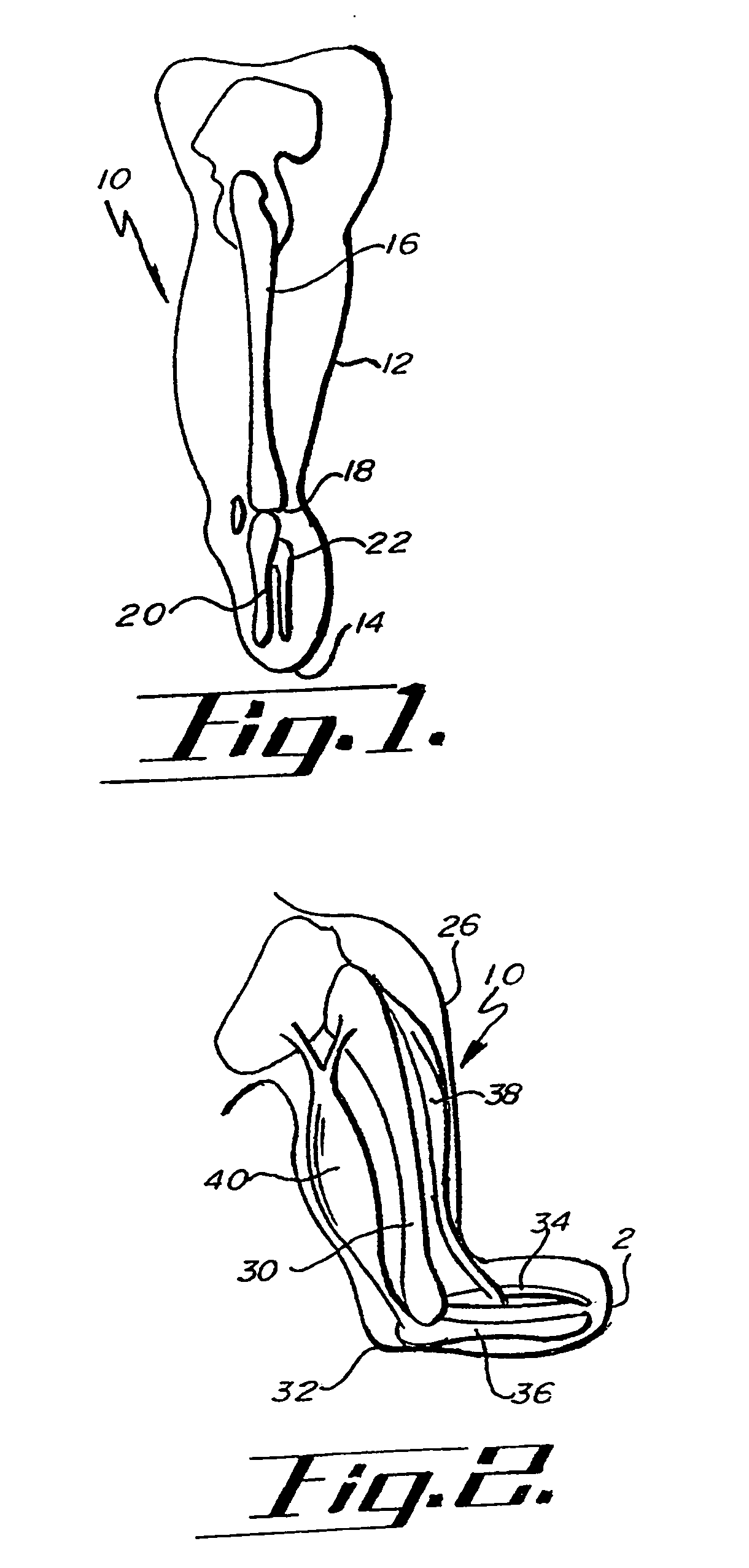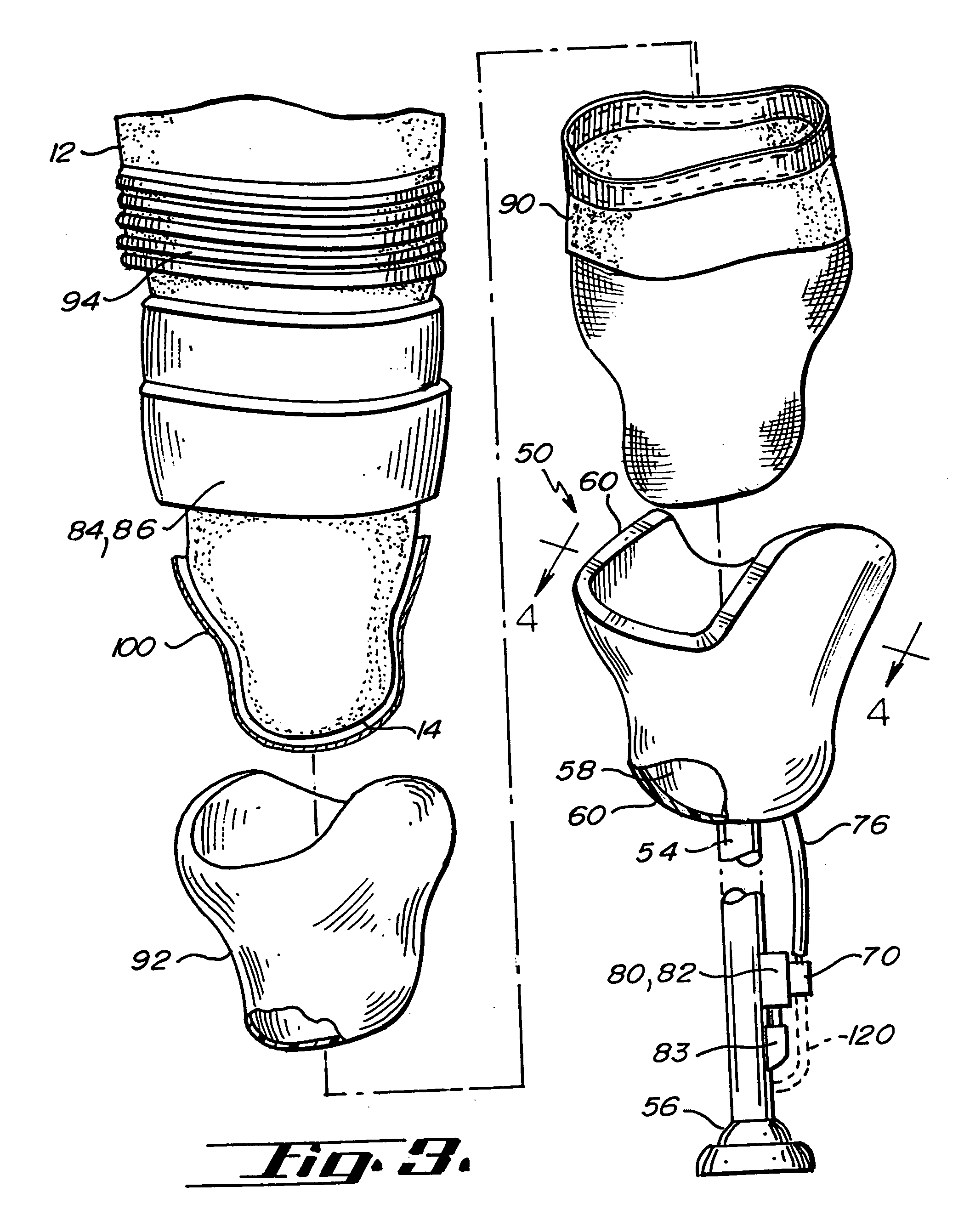Osmotic membrane and vacuum system for artificial limb
a vacuum system and artificial limb technology, applied in the field of prosthetic devices, can solve the problems of not revealing the application of vacuum to the socket cavity, irritation of the residual limb, and the wearer's feeling of losing contact with the artificial limb, so as to reduce the pressure in the socket cavity, the effect of reducing the pressur
- Summary
- Abstract
- Description
- Claims
- Application Information
AI Technical Summary
Benefits of technology
Problems solved by technology
Method used
Image
Examples
Embodiment Construction
[0018]FIGS. 3 and 4 show one embodiment of the apparatus 50 of the present invention. The hypobarically-controlled artificial limb 50 includes a single socket 60, shin 54, and foot 56. The socket 60 has a volume and shape to receive a substantial portion of the residual limb 14 with a space 58 therebetween.
[0019] The apparatus 50 further includes a cavity 62 in the socket 60 with a volume and shape for receiving a substantial portion of the residual limb 14.
[0020] A vacuum source 70 may conveniently be attached to the shin or pylon 54. The vacuum source 70 may preferably be a mechanical or motor-driven pump 72. The vacuum source 70 may be connected to a power source 83, which may be a battery.
[0021] A vacuum valve 74 is suitably connected to the vacuum source 70. The vacuum valve 74 may preferably be disposed on the socket 60. A vacuum tube 76 connects the vacuum valve 74 to the cavity 62. It will be seen that the vacuum source will cause the residual limb 14 to be drawn into fir...
PUM
 Login to View More
Login to View More Abstract
Description
Claims
Application Information
 Login to View More
Login to View More - R&D
- Intellectual Property
- Life Sciences
- Materials
- Tech Scout
- Unparalleled Data Quality
- Higher Quality Content
- 60% Fewer Hallucinations
Browse by: Latest US Patents, China's latest patents, Technical Efficacy Thesaurus, Application Domain, Technology Topic, Popular Technical Reports.
© 2025 PatSnap. All rights reserved.Legal|Privacy policy|Modern Slavery Act Transparency Statement|Sitemap|About US| Contact US: help@patsnap.com



